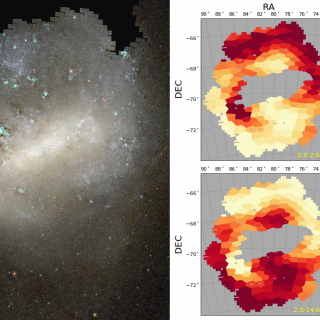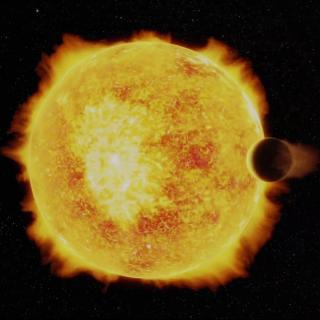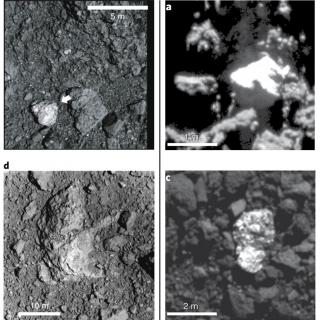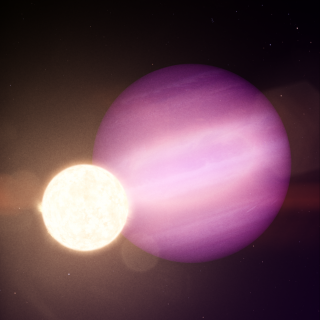
Some galaxies in the Universe display beautiful and appealing features known as "spiral arms". However, not all galaxies show spiral arms in the same manner. Among the variety of cases the Large Magellanic Cloud (LMC), a dwarf galaxy infalling towards the Milky Way, stands out. The LMC is the prototype of an entire family of galaxies, the Magellanic Spirals that are characterised by the presence of a barred stellar structure near their centres and a single spiral arm. Spiral patterns can form after galactic collisions, with subsequent star formation piling up in these arms. Nevertheless, we
Advertised on
![The [O III] spatial profiles The spatial profiles of the observed and expected [O III] 4363 (orange and green, respectively), residuals from subtracting the expected collisional [O III] 4363 profile from the observed one (red), and the O II 4649 profile scaled (blue).](/sites/default/files/styles/crop_square_2_2_to_320px/public/images/news/A46.png?h=0150dd40&itok=dpTtNI6g)



